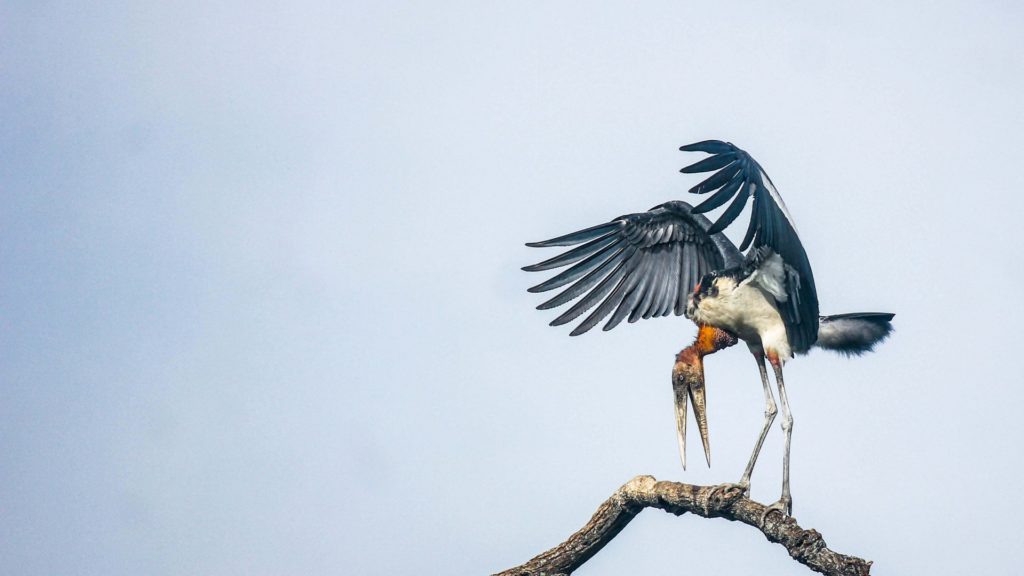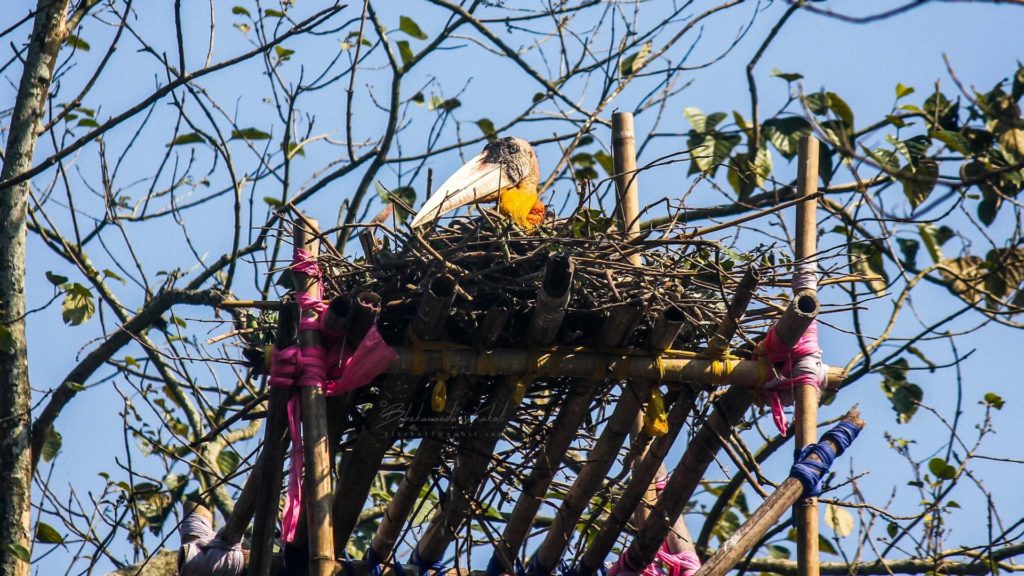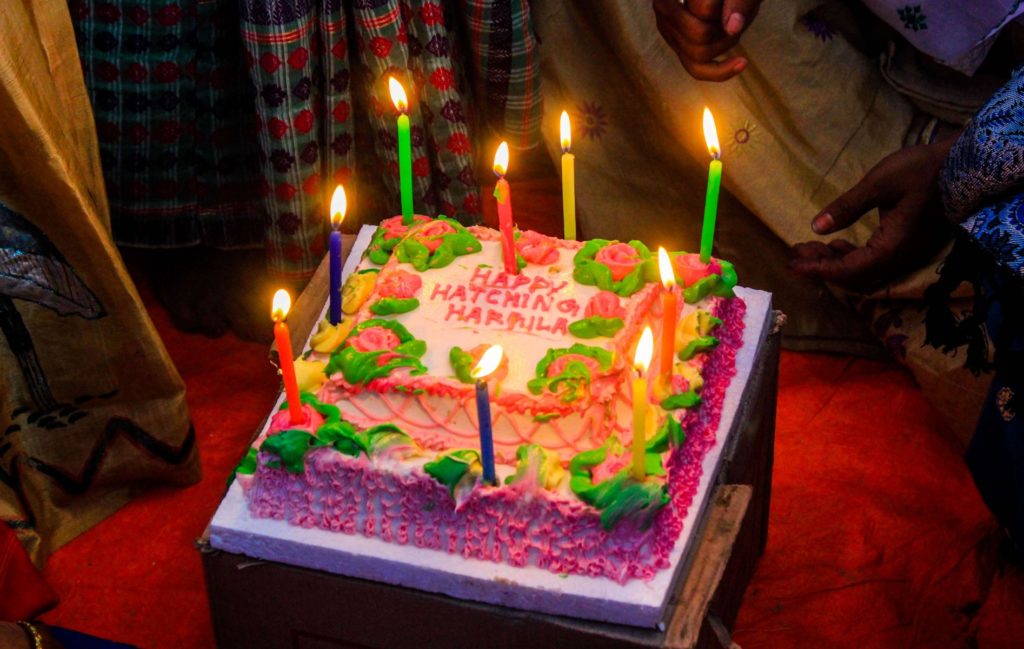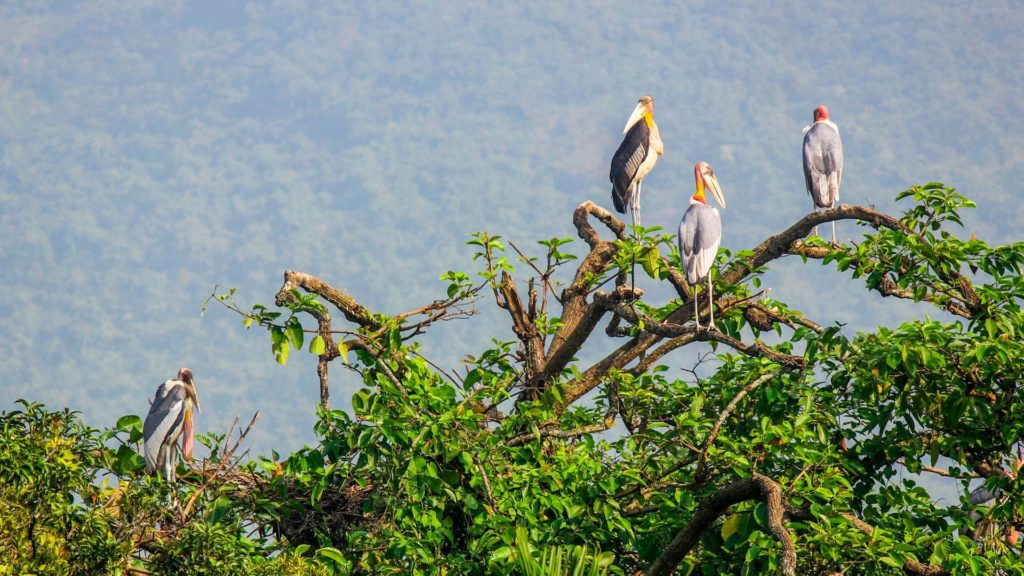Written by Neha Sinha
The village hall is a riot of color. Women in vivid clothing give speeches, sing and shake percussion, and a large, ornately decorated cake is placed at the center of the throng, complete with candles. But whose birthday are they celebrating? The words iced on the cake offer a clue: “Happy Hatching Hargilla.” This is a hatching ceremony, celebrating the successful breeding of a bird once hated and feared.
Previously widespread across the wetlands of South Asia, the towering and now-endangered greater adjutant (Leptoptilos dubius) suffered dramatic declines during the 20th Century. Some of the causes are familiar, such as habitat destruction and pollution, but others less so. Their Assamese name, hargilla (derived from the Sanskrit for “bone-swallower”) gives a clue as to this scavenger’s public image. Because they have a habit of leaving a trail of bones and debris in their wake, the storks were seen as harbingers of bad luck, to the extent that some villagers even poisoned them or destroyed their nests.
But not anymore. In India today, the stork has found refuge in two locations, the Eastern state of Bihar and the North Eastern state of Assam, both of which now have substantial nesting sites. Their security hasn’t come easily, though. In both districts, it took eight years of grassroots community intervention to secure habitat for these birds.

The Adjutant is named after a military rank, in honor of their stiff movements. Image credit Bibekananda Kakoti.
As team leader of three Conservation Leadership Programme award-winning projects*, Purnima Devi Barman’s work is founded on the fact greater adjutants are very particular about the kind of tree they nest in. They require large, broad-limbed trees with sparse foliage, which often occur on privately-owned land such as gardens. Accordingly, Purnima’s approach was to inspire a sense of community pride and ownership towards the bird, making them part of local identity.
In Assam, she engaged with the women of Dadara village, mobilizing them into the ‘Hargilla Army’: an all-female team of conservationists dedicated to protecting the world’s most endangered stork. As well as using traditional songs and rituals to raise awareness in events such as the hatching ceremony, the women take part in training and are provided with sustainable livelihood opportunities. One of these is creating beautiful, traditional scarves with a new motif: the greater adjutant.
Purnima also focuses on the ecology of the storks themselves. Last year, a storm felled six valuable nesting trees, and she decided to construct artificial nesting platforms. “It happened while the bird was in its breeding season,” says Barman. “I saw the pairs flying here and there when their tree fell down. In three locations, I experimented with making nesting platforms. Two were accepted.”

After a storm destroyed nesting trees, artificial platforms proved successful. Image credit Bibekananda Kakoti.
This venture offered important lessons for this year: “We will erect artificial platforms in a more systematic way. We were late last time and did not have many resources. It was just an experiment that by some miracle succeeded.” It was the relief at this success that sparked the hatching ceremony, a far cry from the unease and suspicion the birds used to elicit.
Purnima’s work has given marginalized women a voice, while helping stork numbers rise from 30 to over 150 in just seven years. And she has achieved prestigious recognition: in 2017 she received the Nari Shakti Puraskar Women’s Empowerment Award from India’s Ministry of Women and Child Development.
On the other side of the Brahmaputra River, several years of community outreach are also bearing fruit in Bihar. Arvind Mishra, Bihar state coordinator of the Indian Bird Conservation Network, has been campaigning for acceptance of the adjutant. In 2017-18, a survey found 130 nests in Khairpur Kadwa. Here, too, a few chosen trees are of great significance to the stork: the nests were crammed onto just 59 trees. But their future looks bright. Thanks to Arvind’s advocacy, the government is now invested in greater adjutant conservation. In 2016, it even opened a rescue center for the stork chicks, who often jump out of their nests before properly fledged. The center rescues them and releases them when they are able to fly.
“The community has grown to admire the storks,” says Arvind. “Part of our outreach focused around the fact that the greater adjutant eats rats and snakes, whose populations can get out of control. At the same time, I have been campaigning to save wetlands and wetland basins, which is a very difficult, long-term activity.”
In Bihar, the storks forage in fields and wetlands for food, but back in Assam, they have replaced a taste for carrion with something equally unsavory. Deepor Beel Important Bird Area (IBA) in Guwahati adjoins a huge garbage dump, where storks are regularly seen feeding. Perhaps storks have always been found near municipal waste, as greater adjutant storks were part of Kolkata city’s municipal symbol (though the bird is no longer seen in West Bengal). The health impacts of eating garbage needs further study; a literal ‘junk food’ diet is unlikely to benefit the animals. In 2018, 26 storks died in a mass mortality event in Deepor Beel. The cause is still unknown.
“The Guwahati garbage dump does provide a continuous food supply to the greater adjutant, but it’s likely they are continuously getting exposed to pathogens,” says Narayan Sharma, Assistant Professor, Department of Environmental Biology and Wildlife Sciences, Cotton University. “We urgently need to initiate a study to check levels of toxicity in storks so that timely interventions can be made.”
The threats aren’t going away any time soon, but as the initiatives at these two sites show, we have cause for hope.

This cake, decorated with Happy Hatching Hargilla,” is from a hatching ceremony, celebrating the greater adjutant’s successful breeding. Image via Birdlife International.
*Purnima and her team received Conservation Leadership Programme (CLP) grants in 2009, 2012 and 2015. CLP is a partnership between BirdLife International, Fauna & Flora International and the Wildlife Conservation Society (WCS), which provides funding, training and a professional network for early-career conservationists.
Featured image: the “baby shower”-style hatching ceremony drew media attention. Image credit Aranyak.






